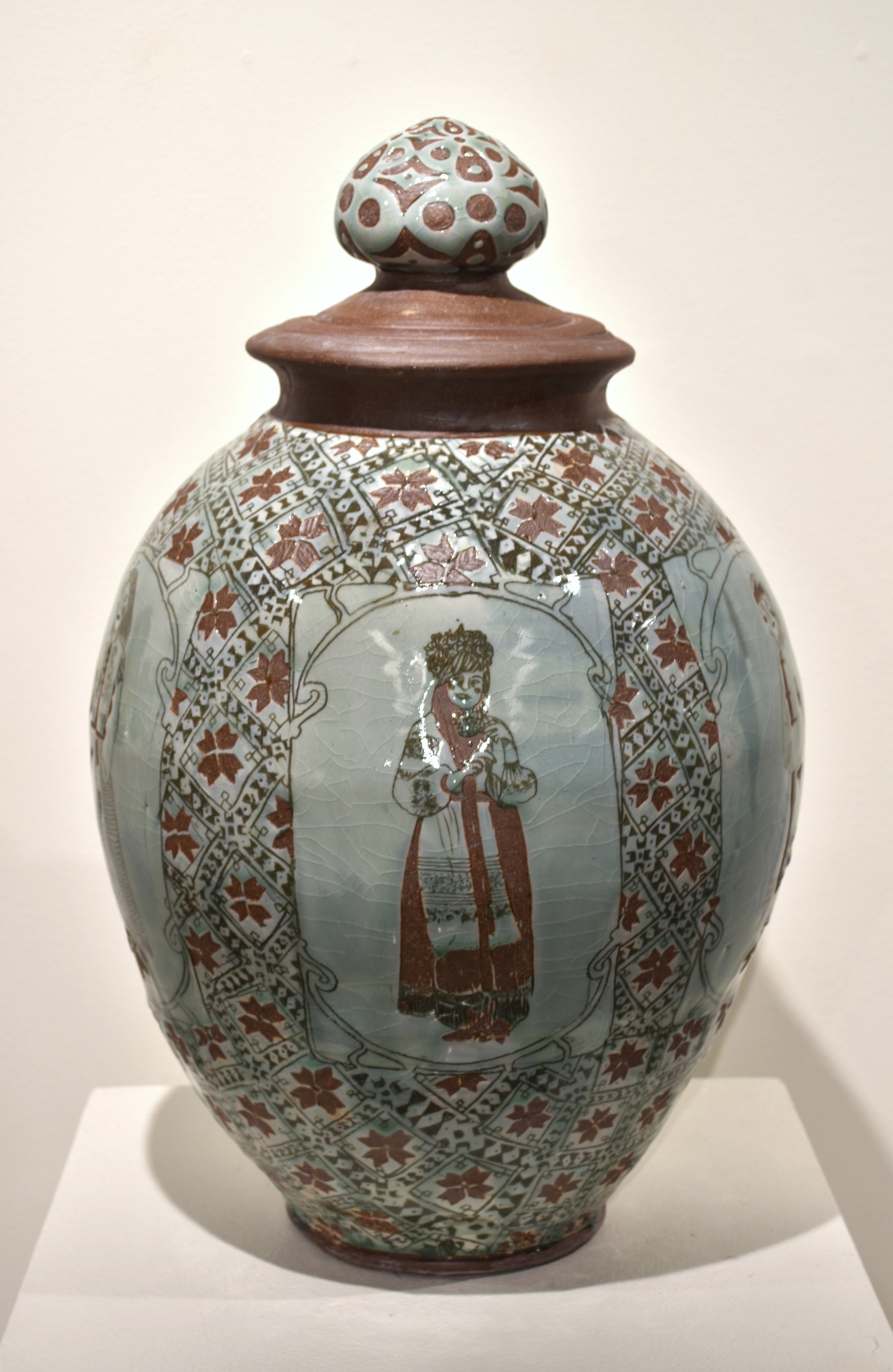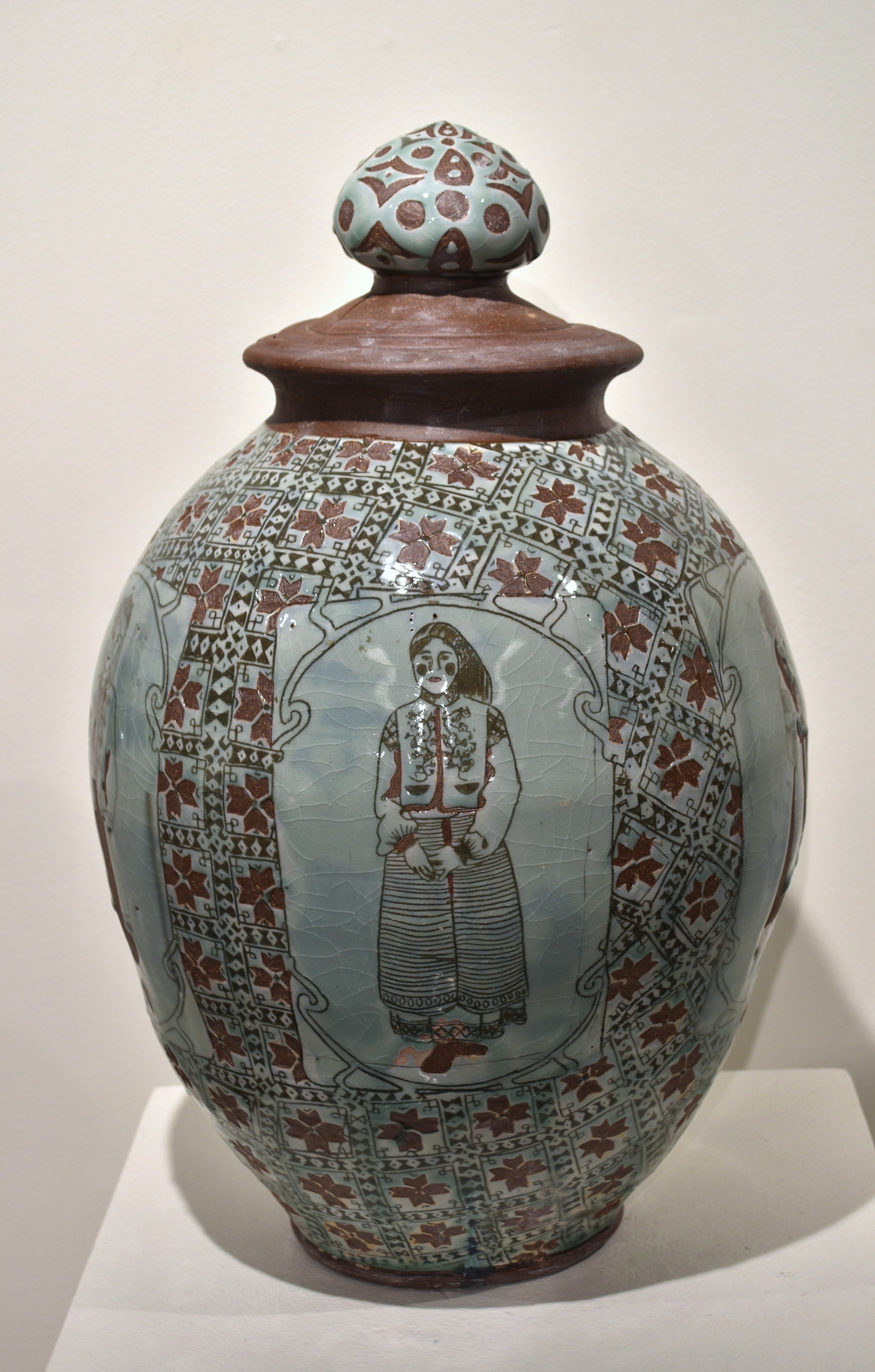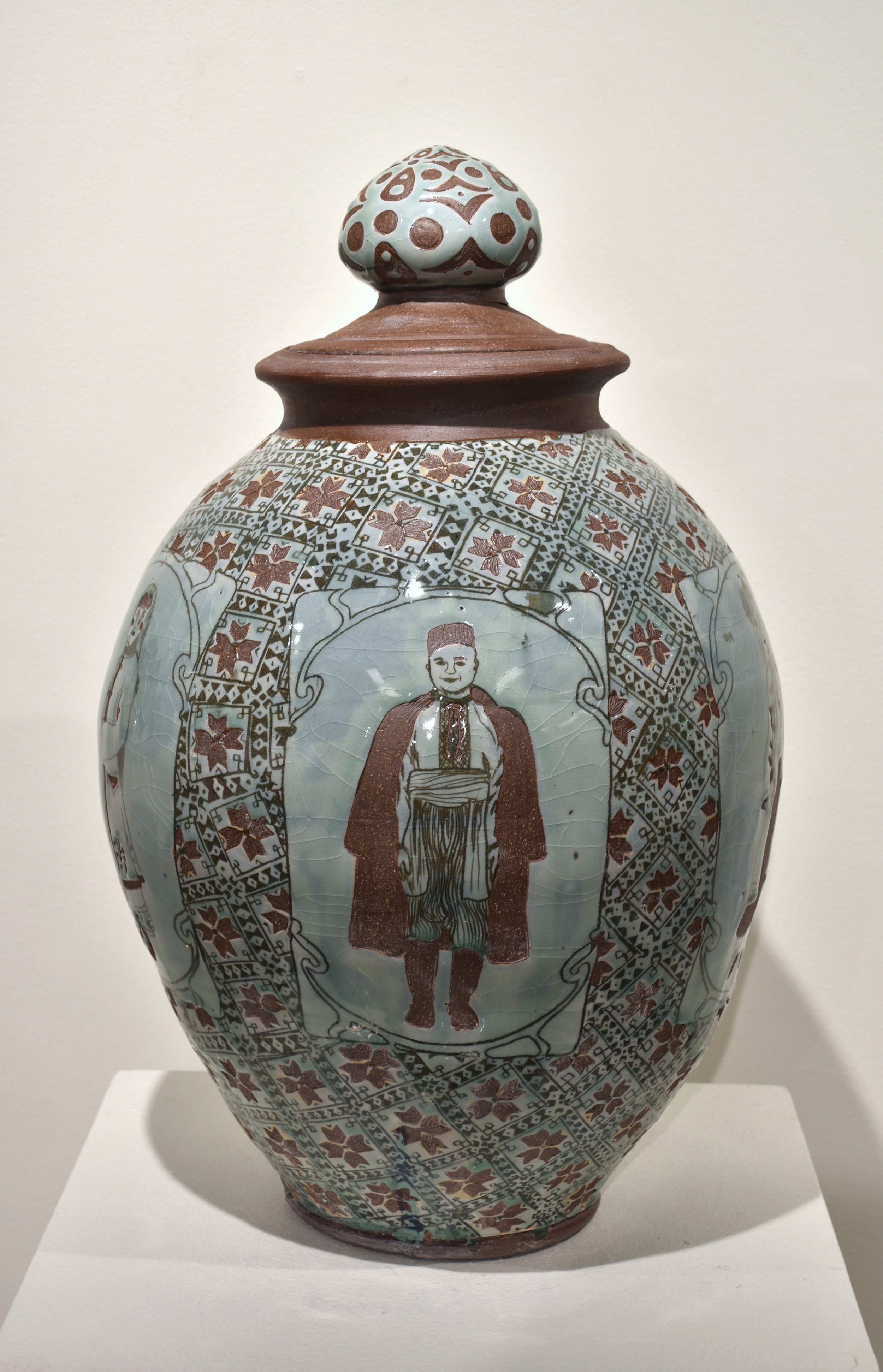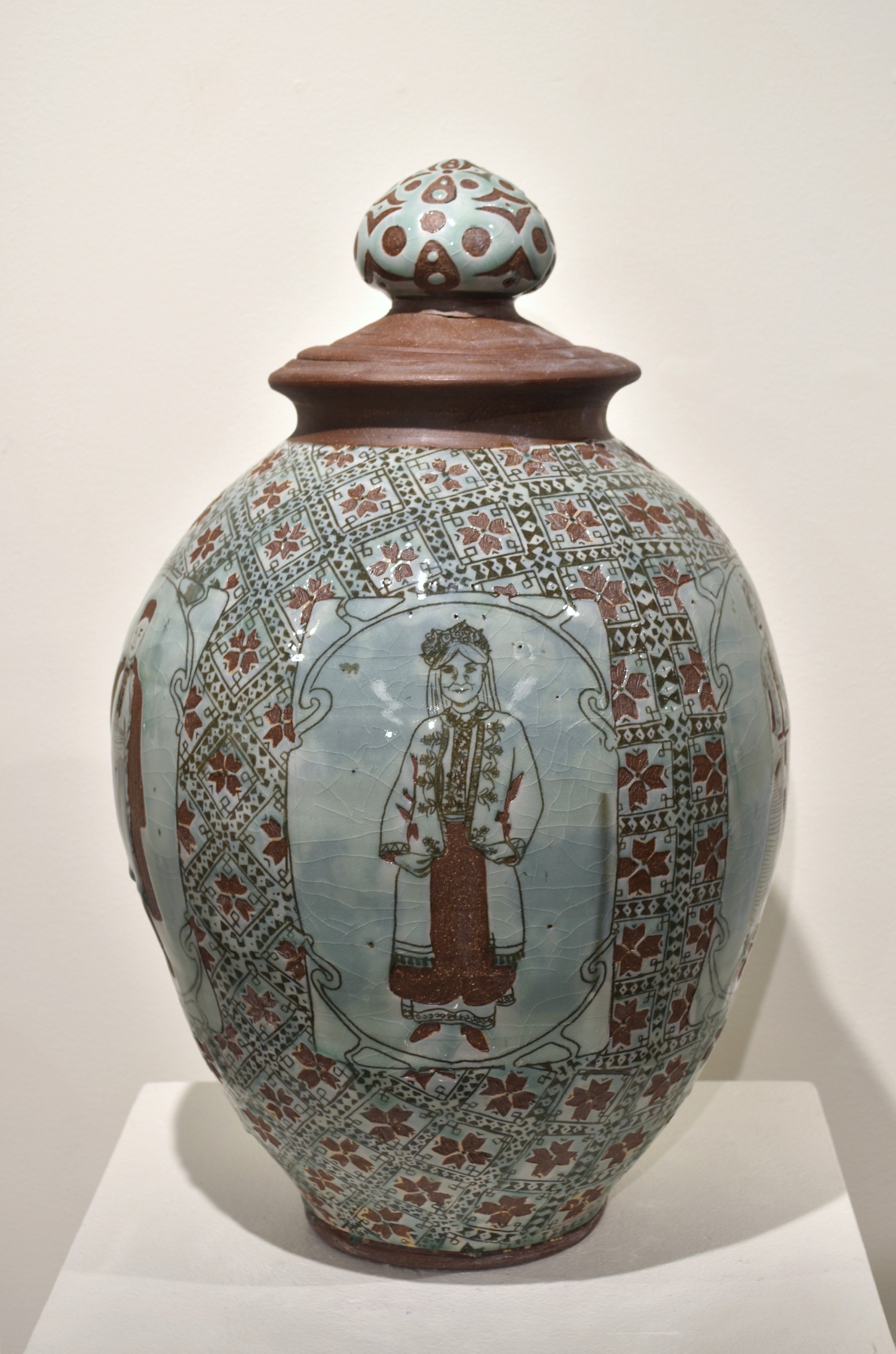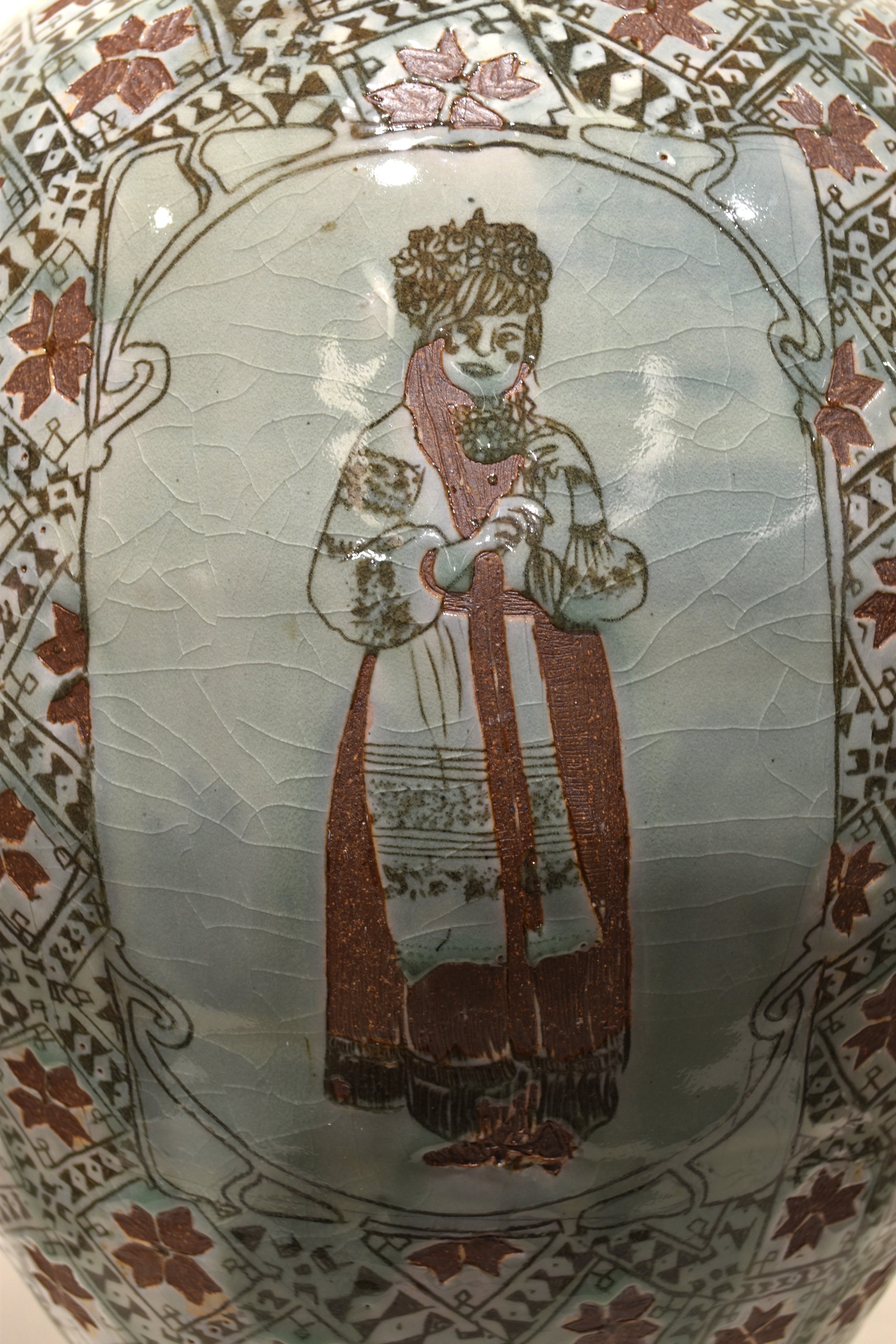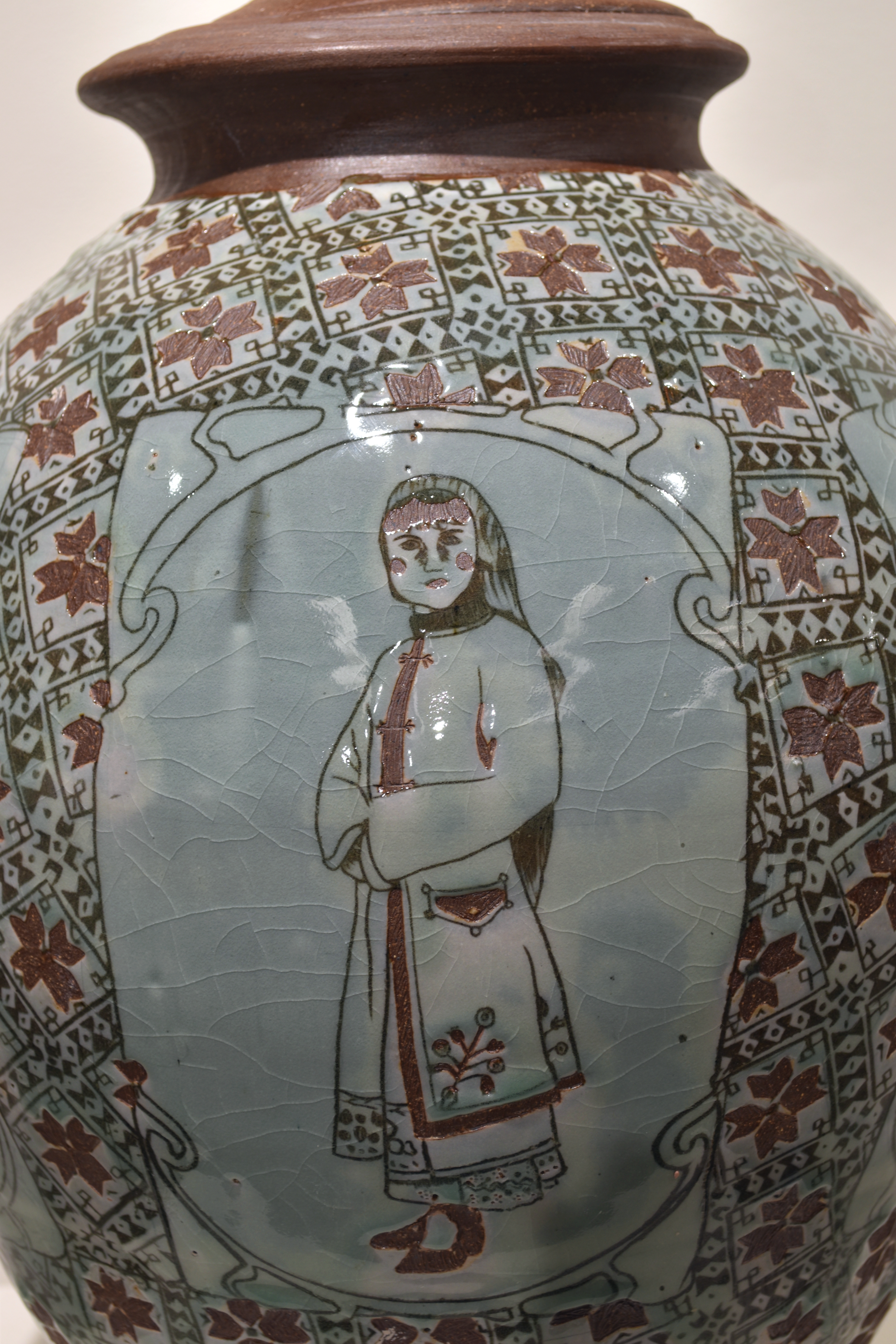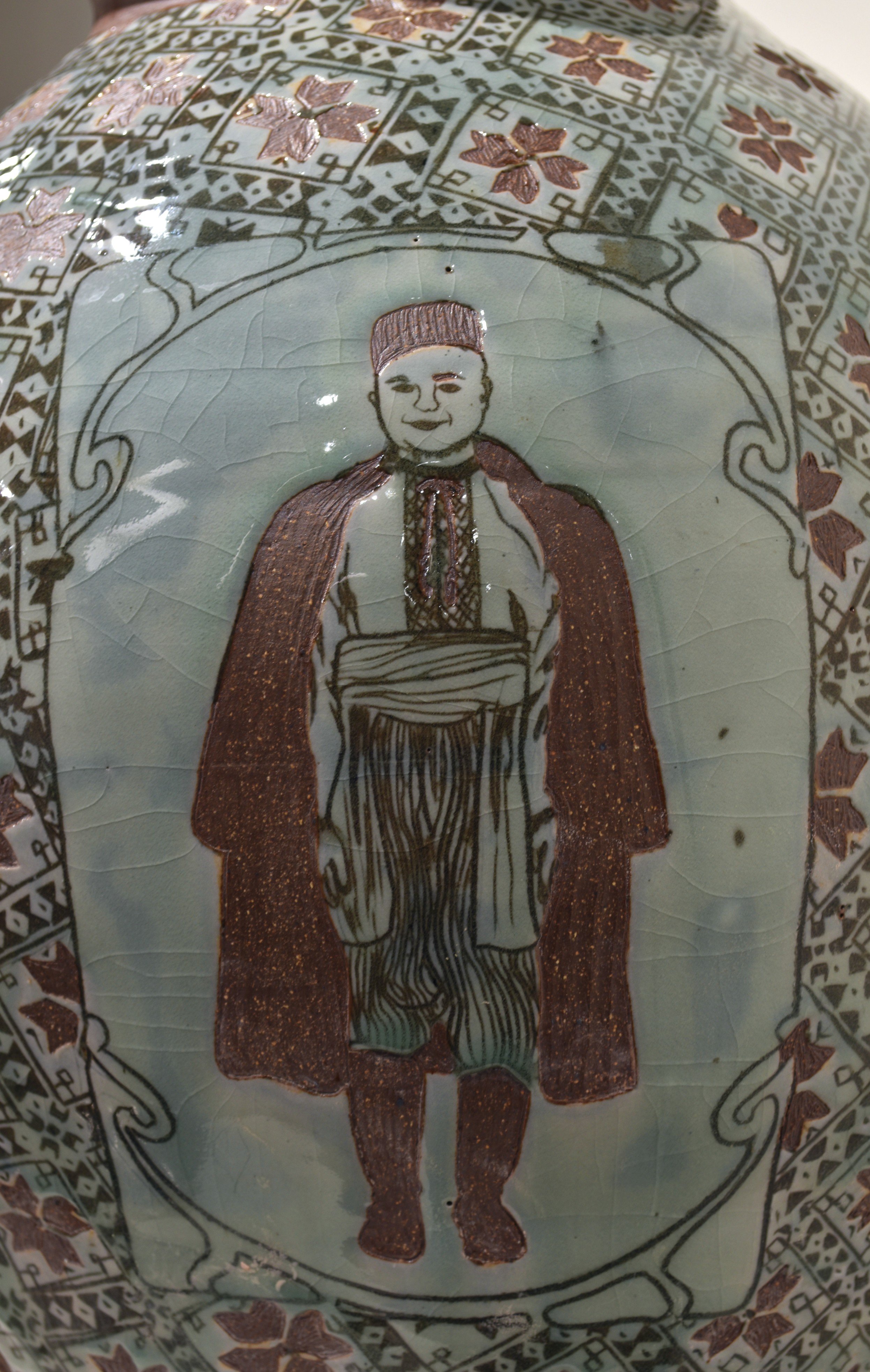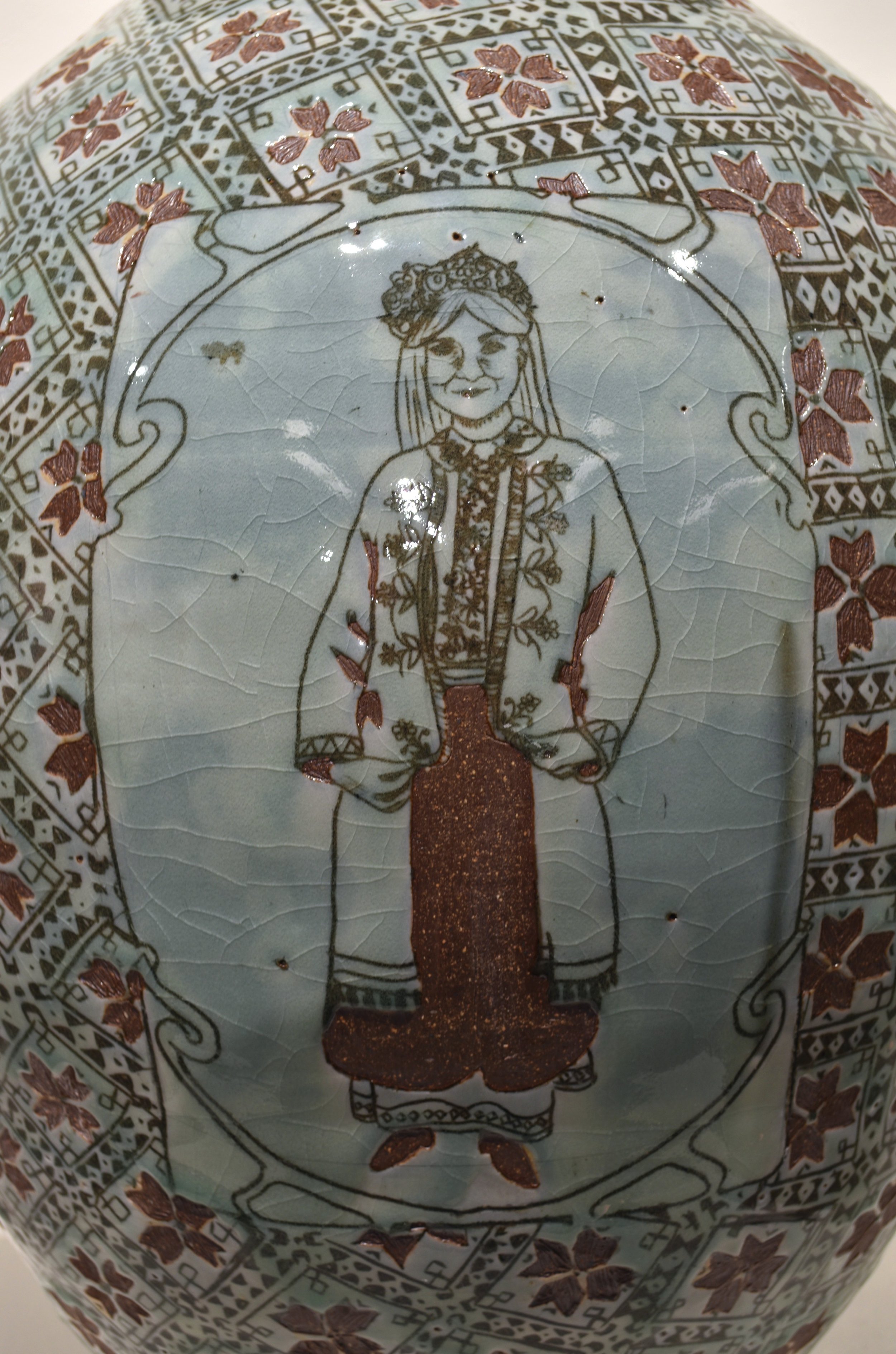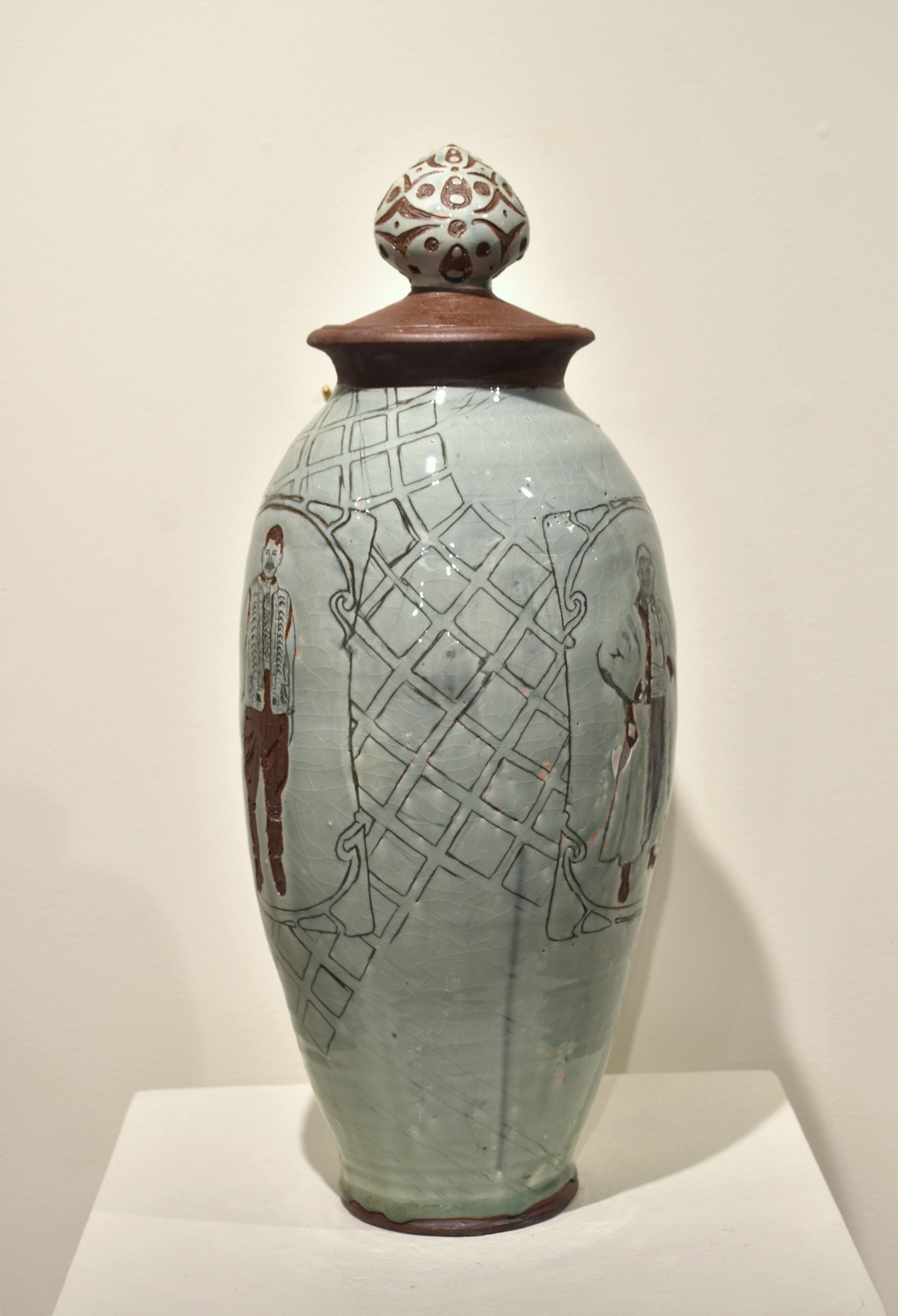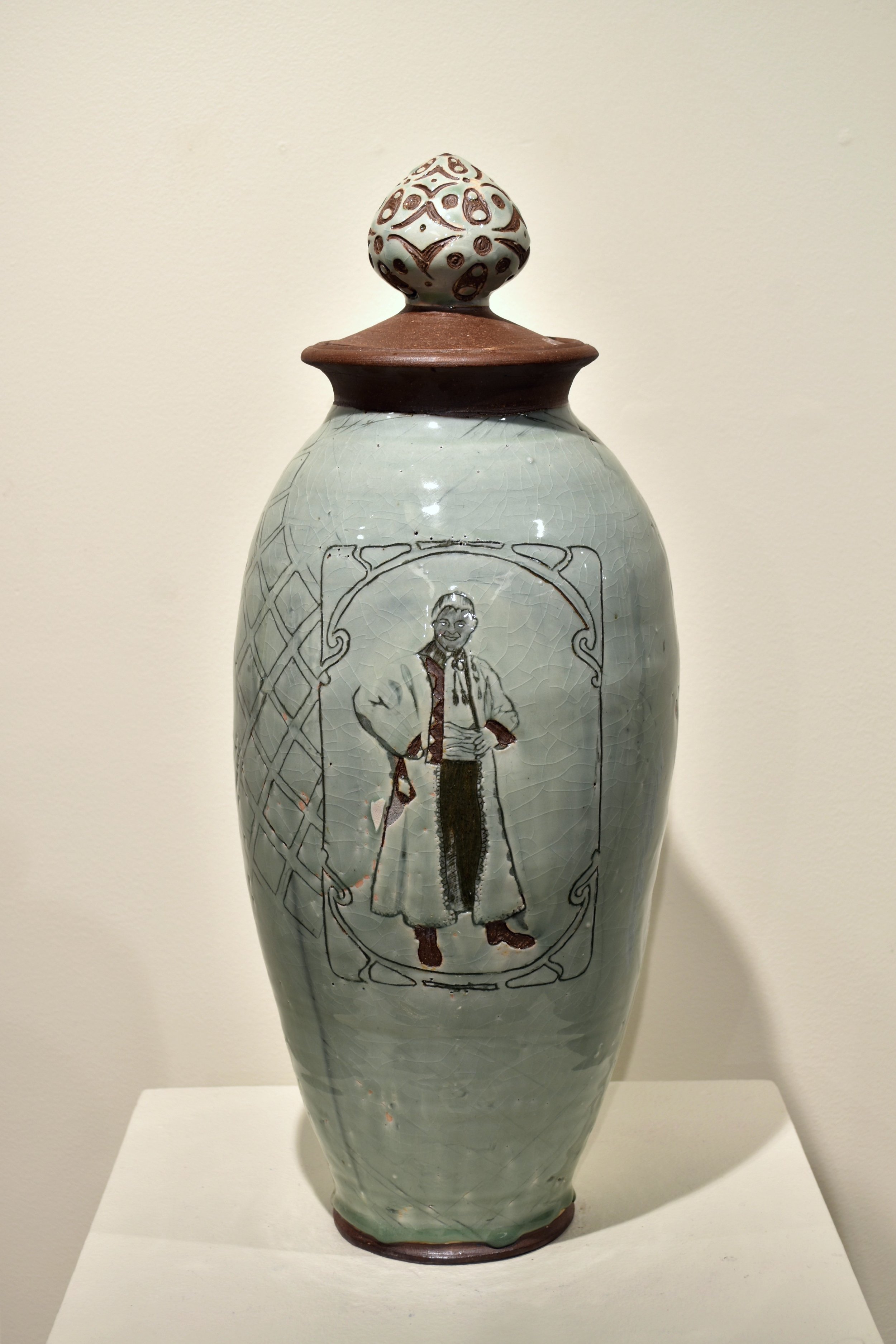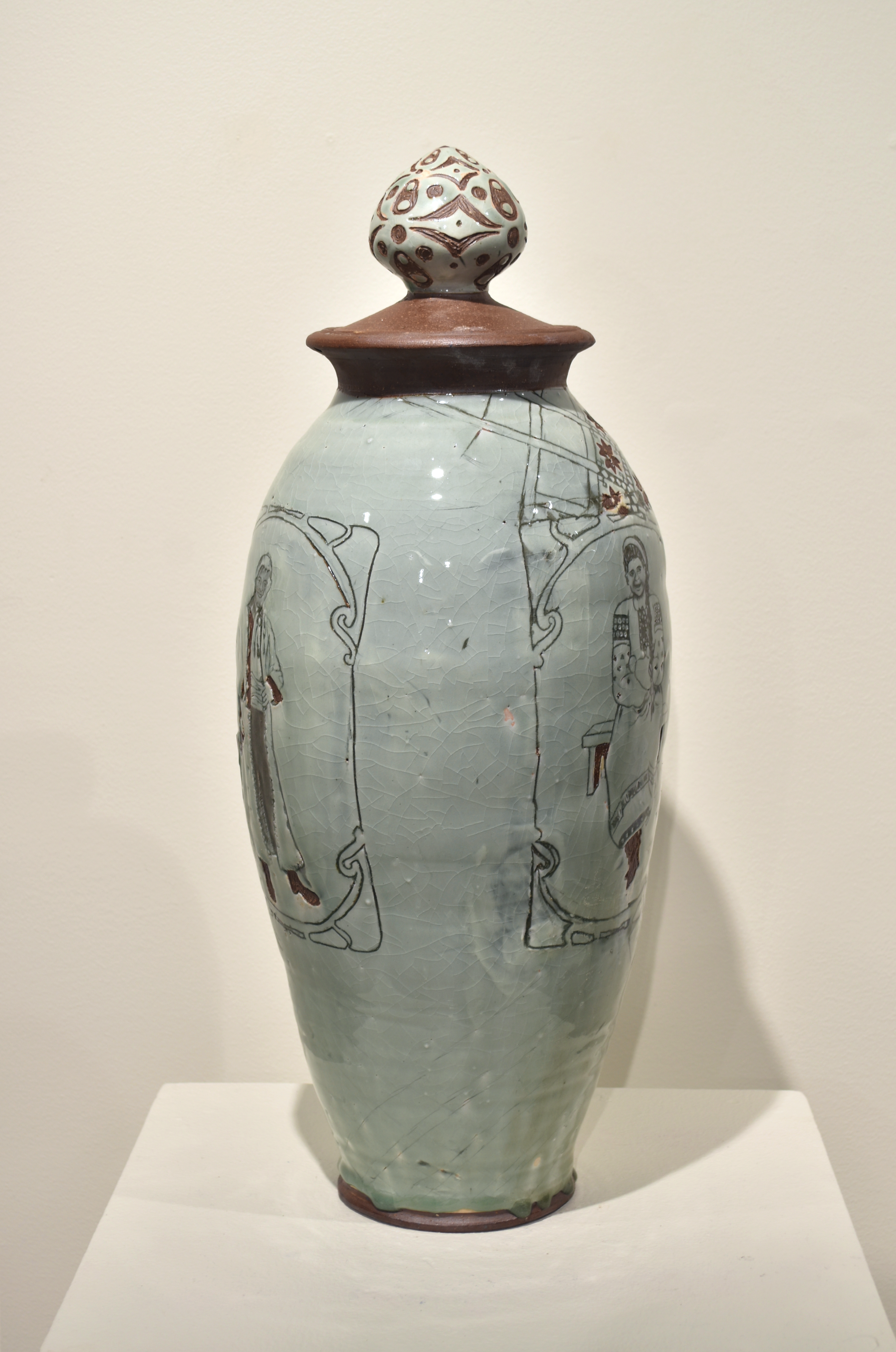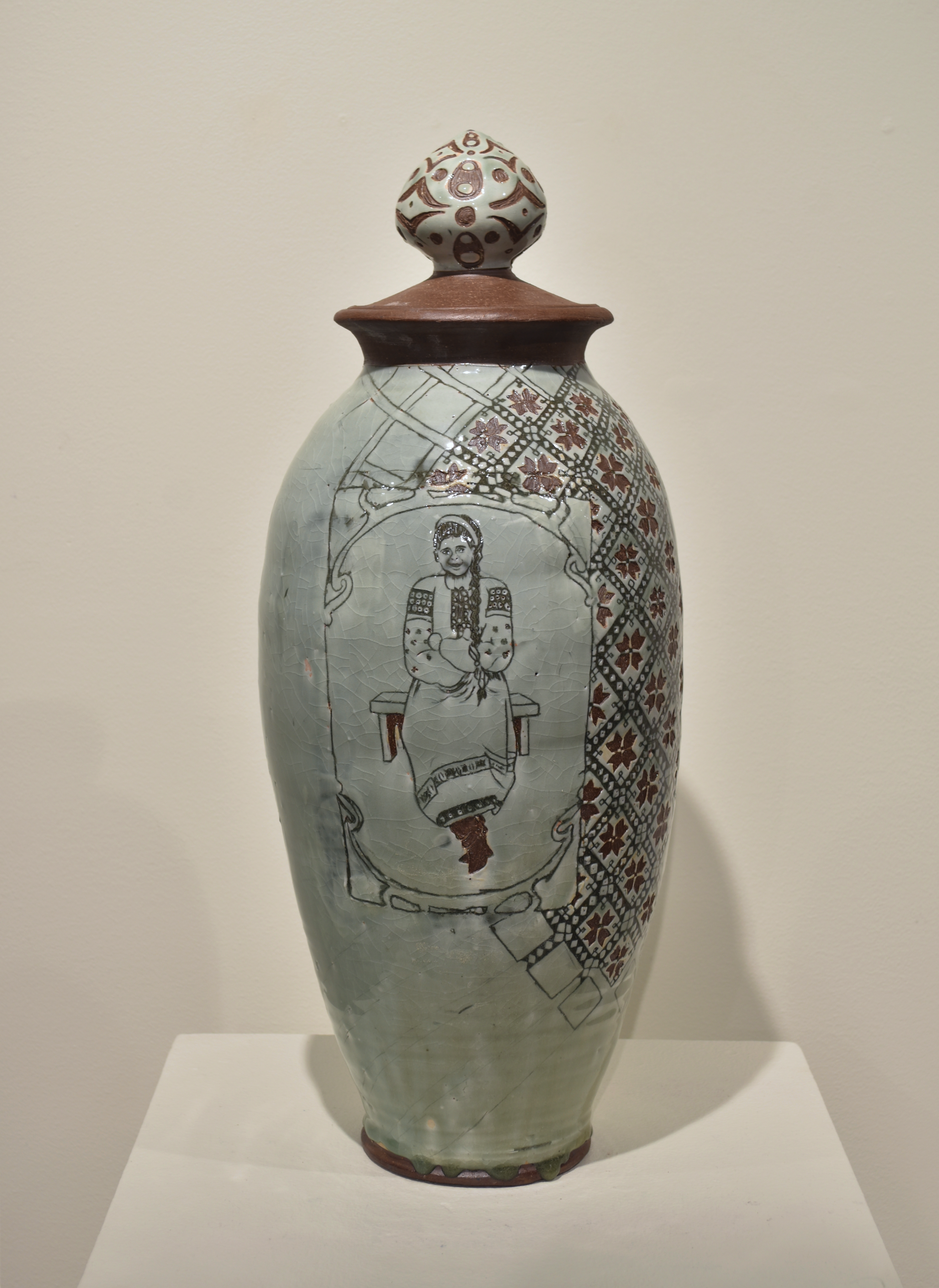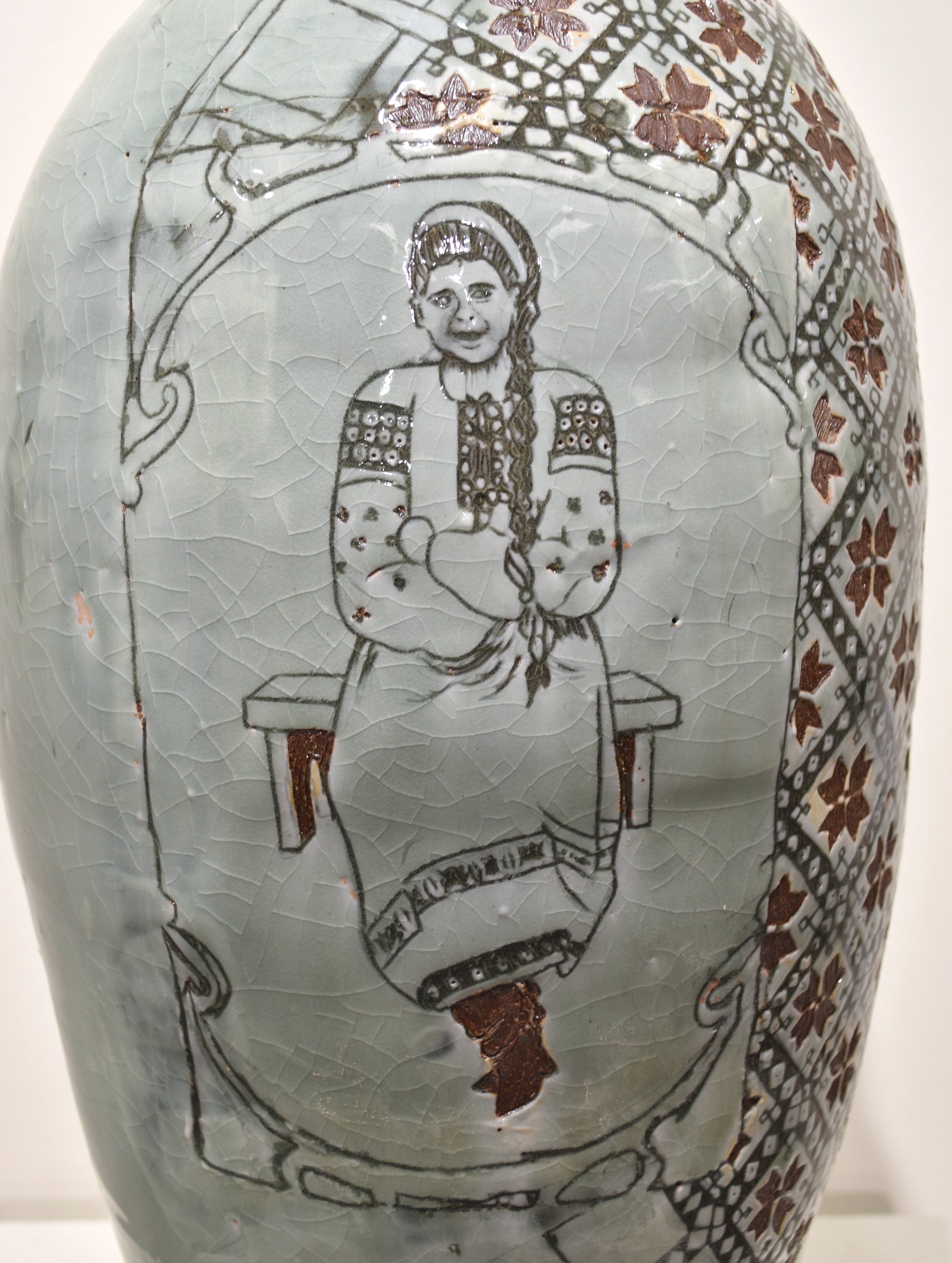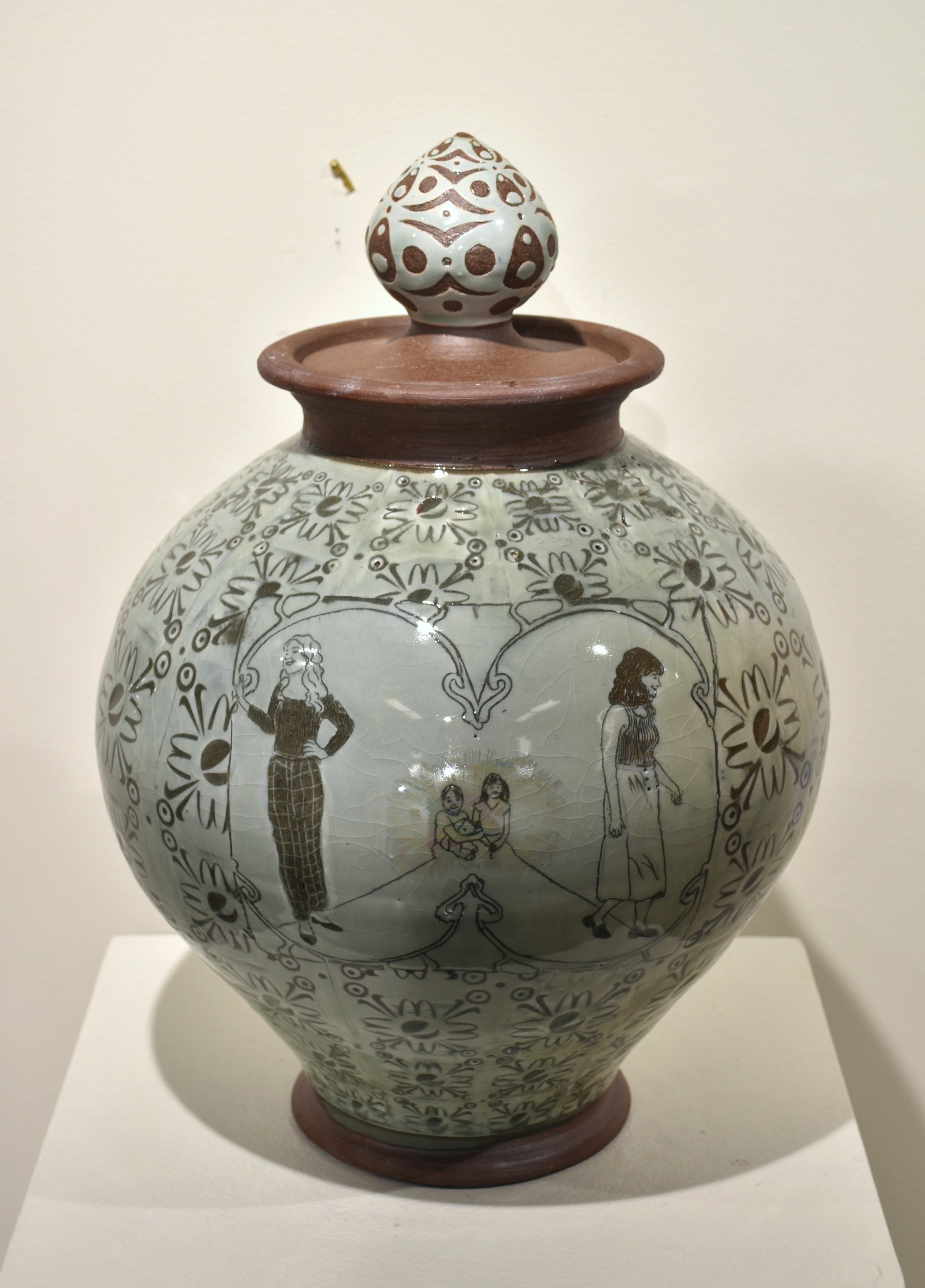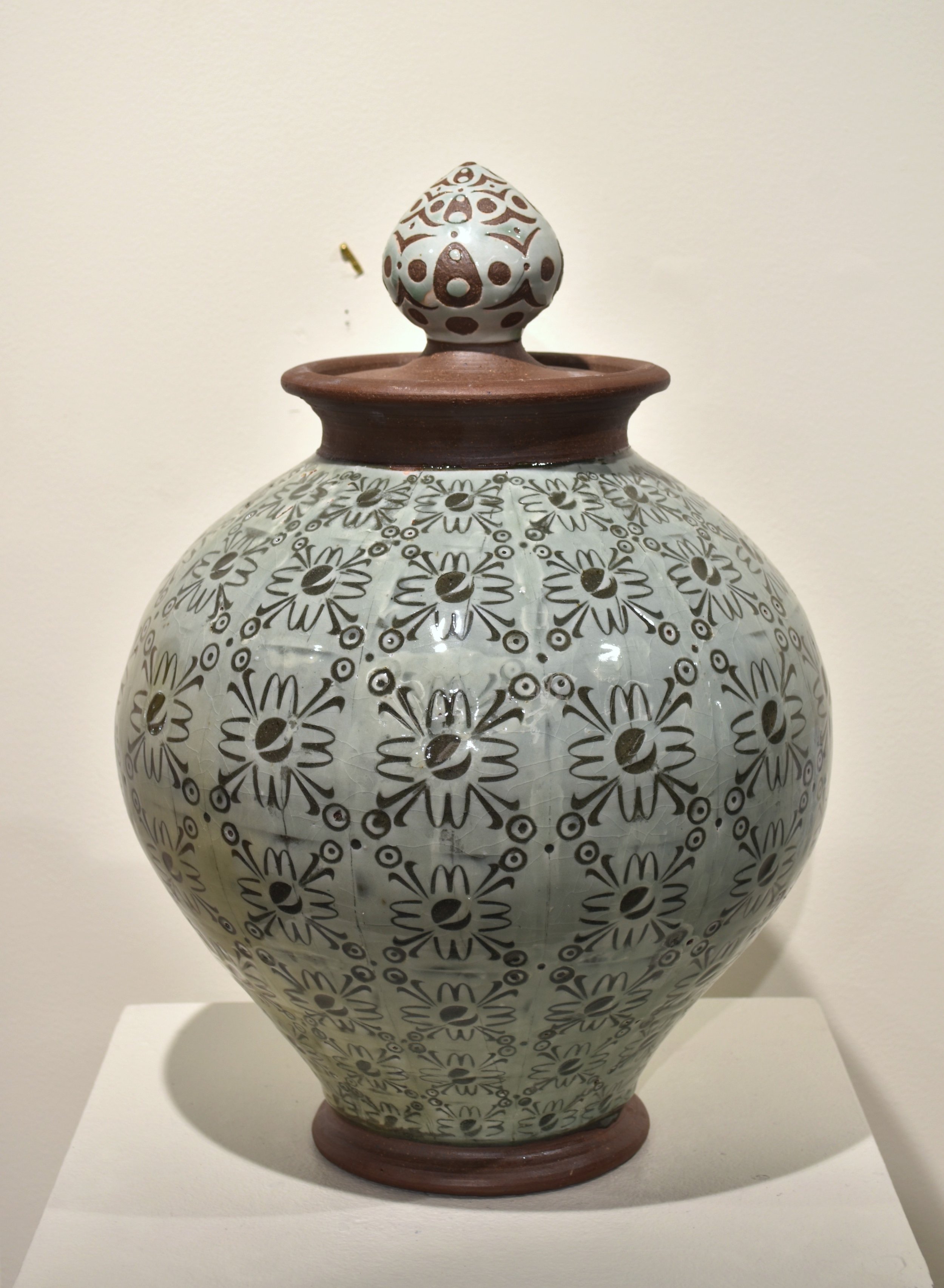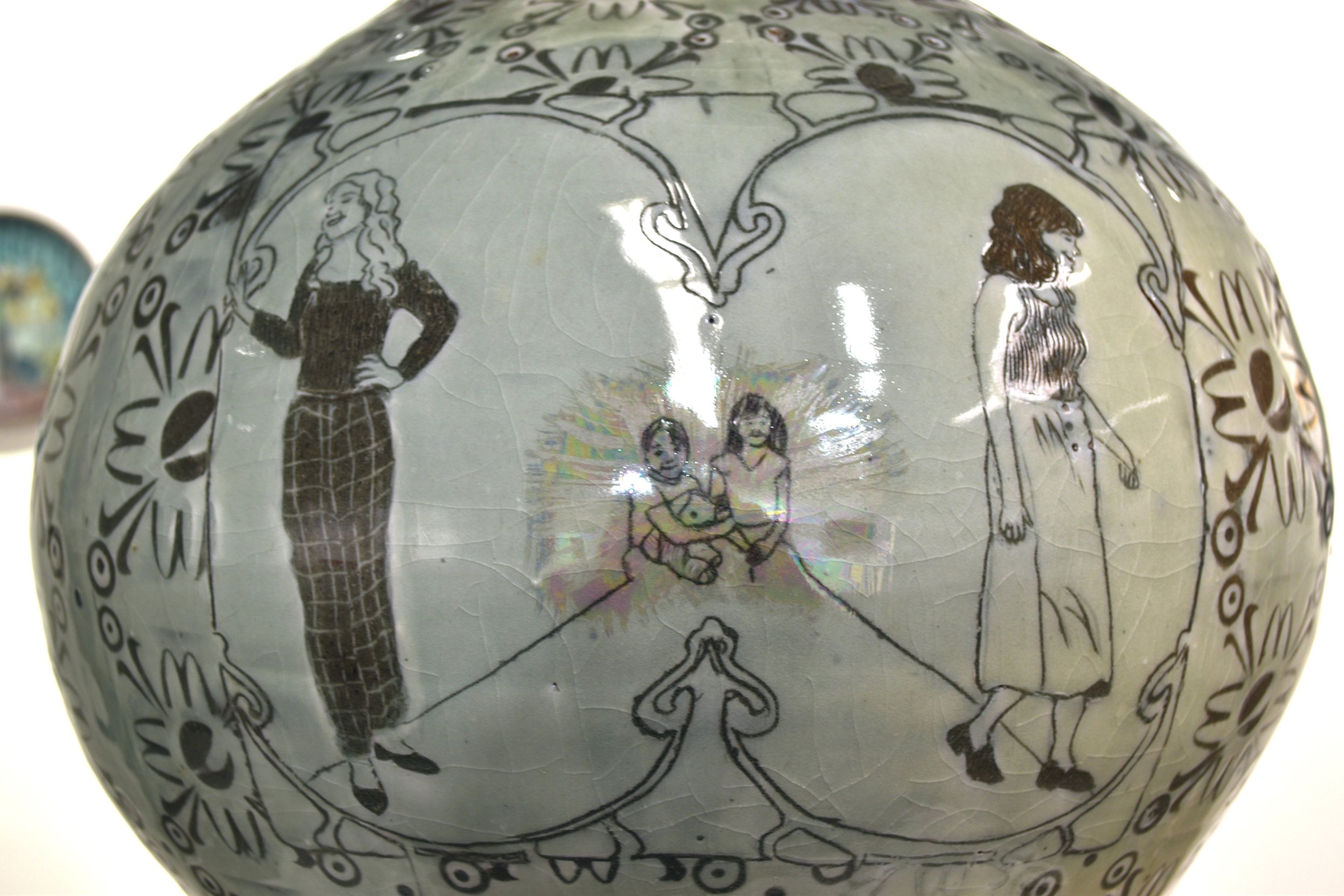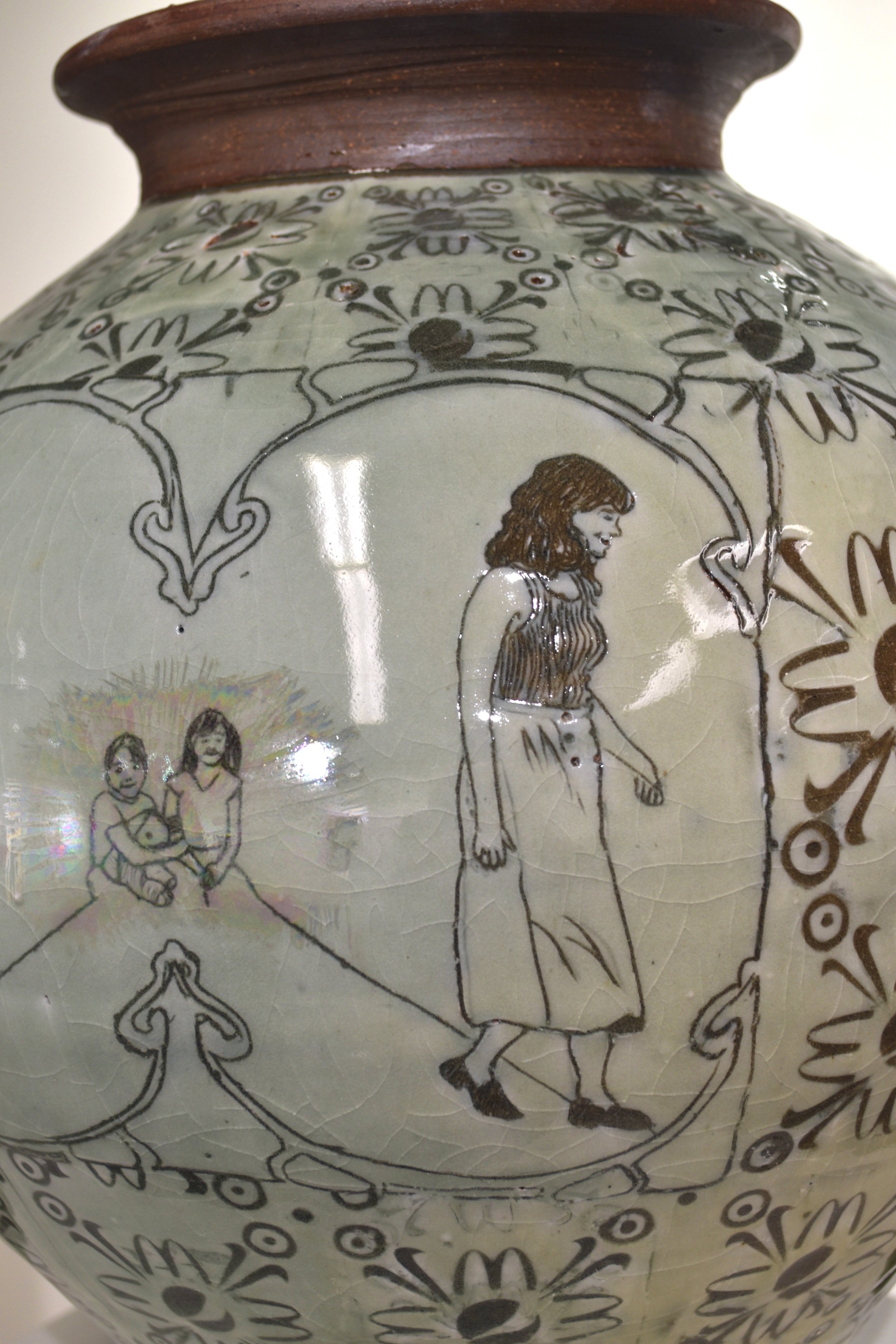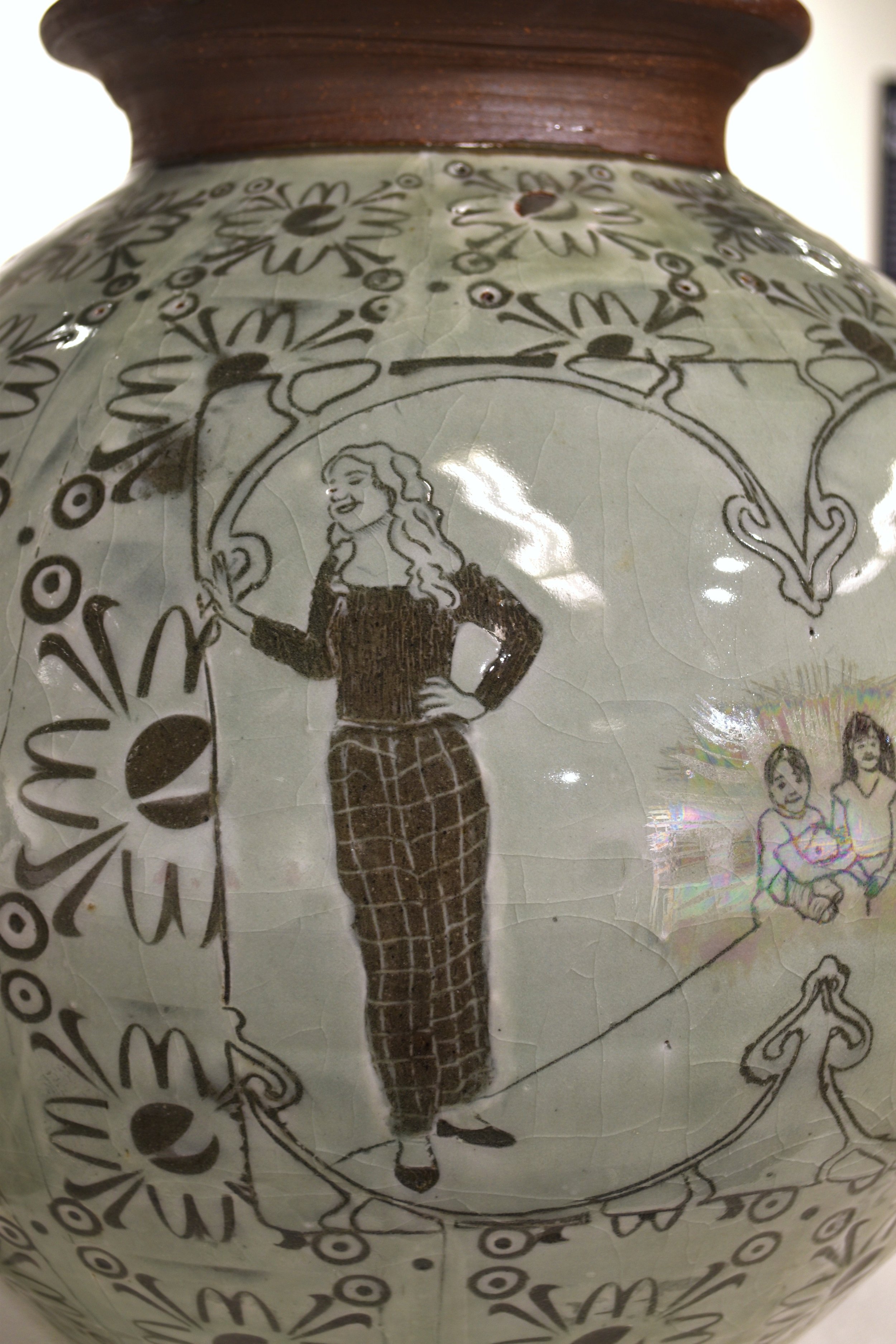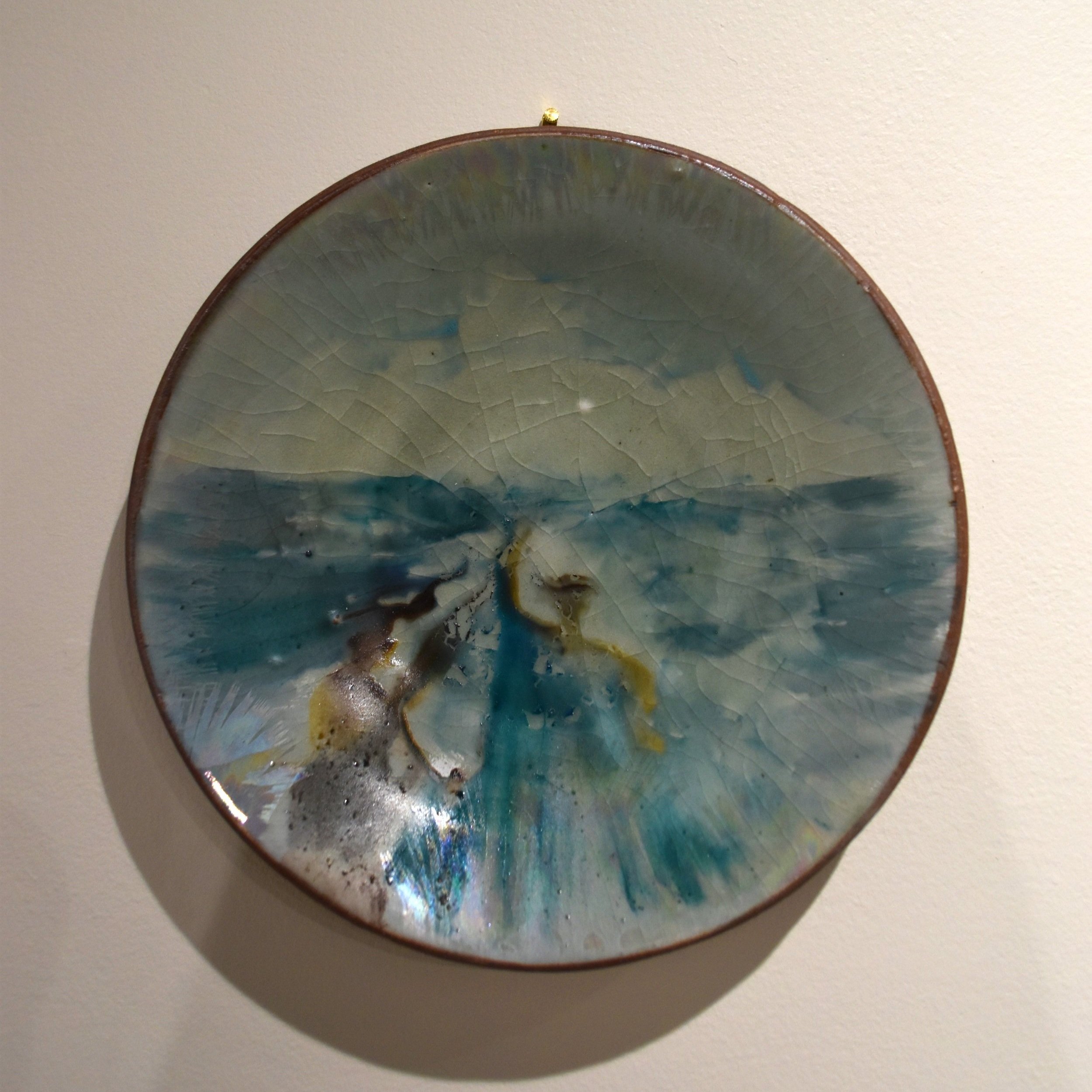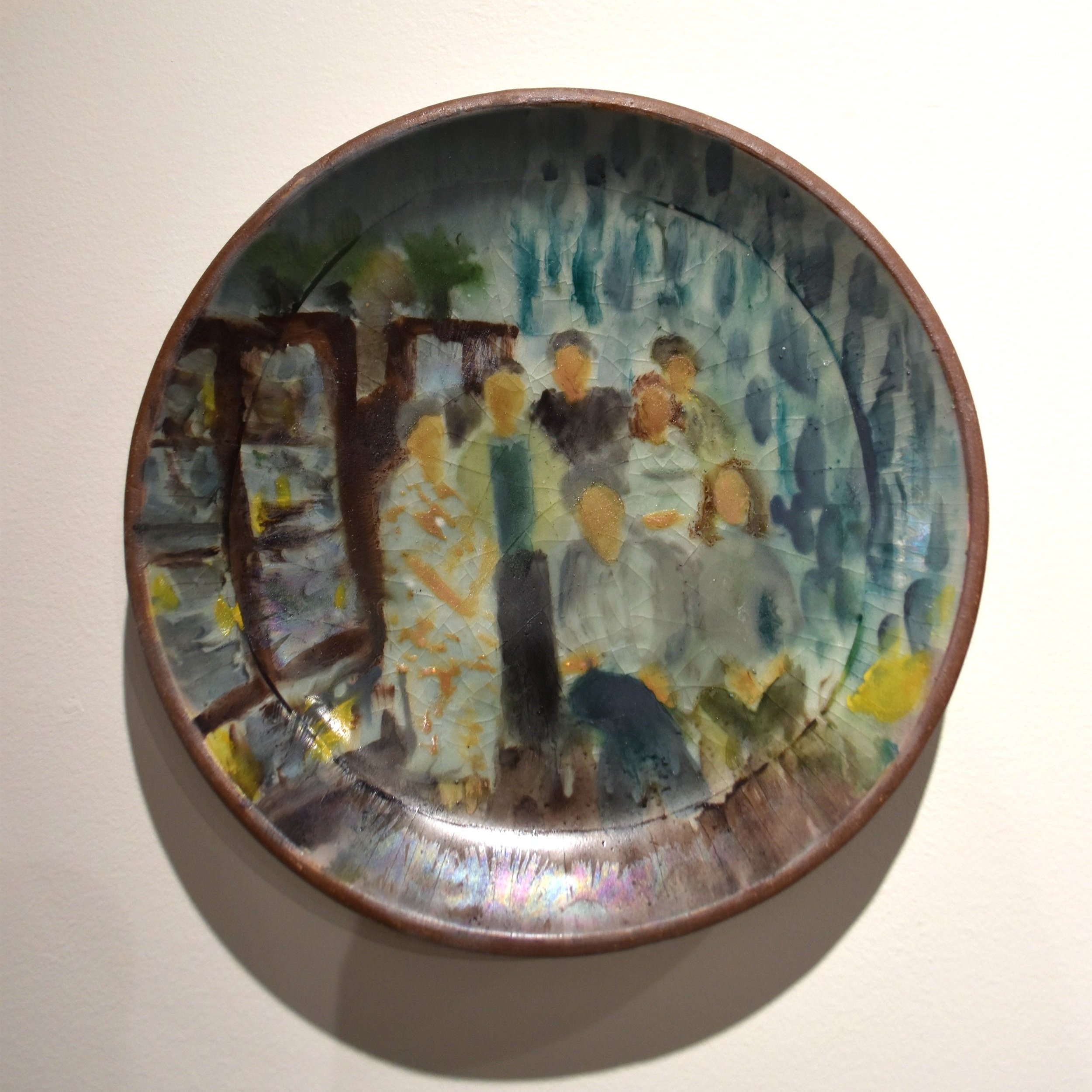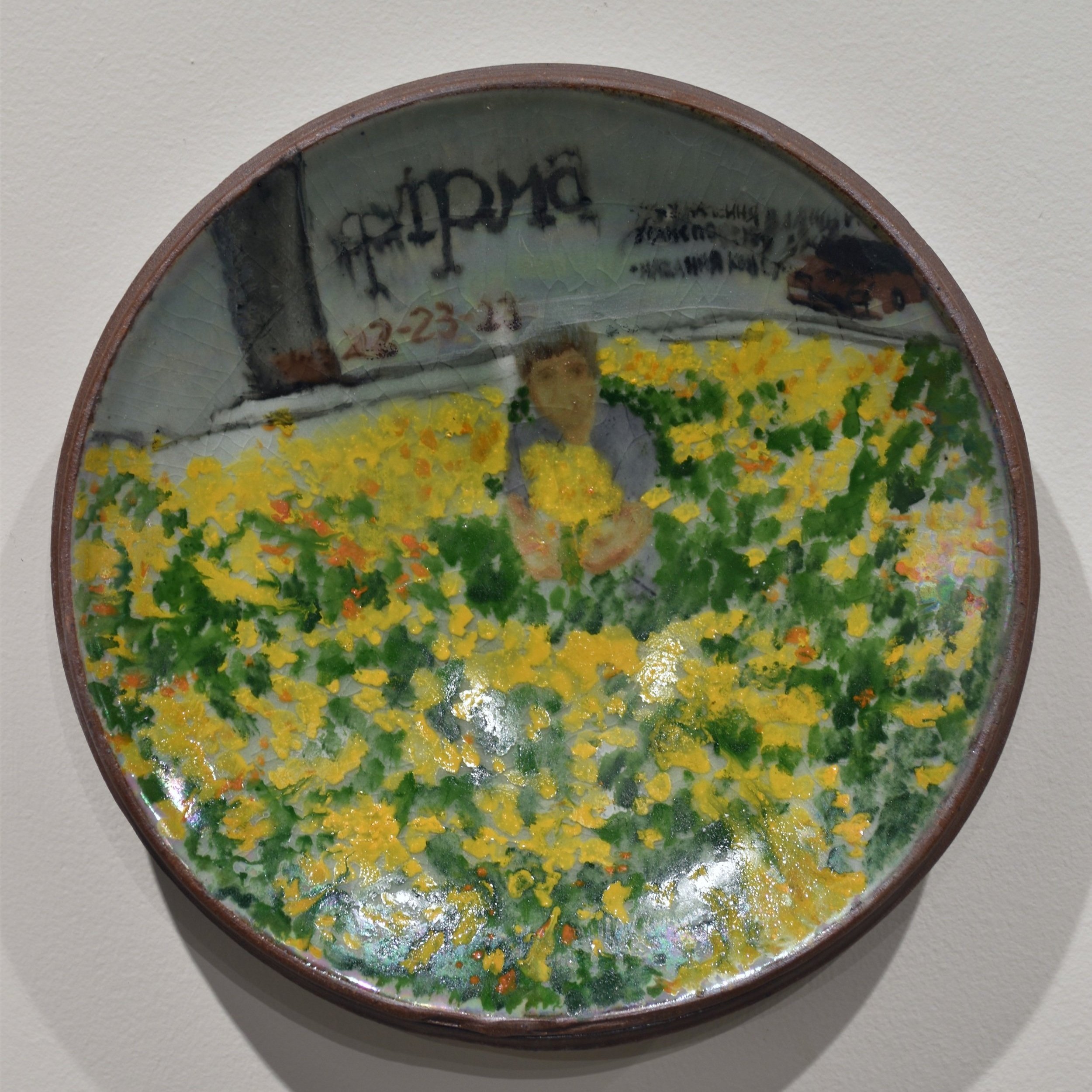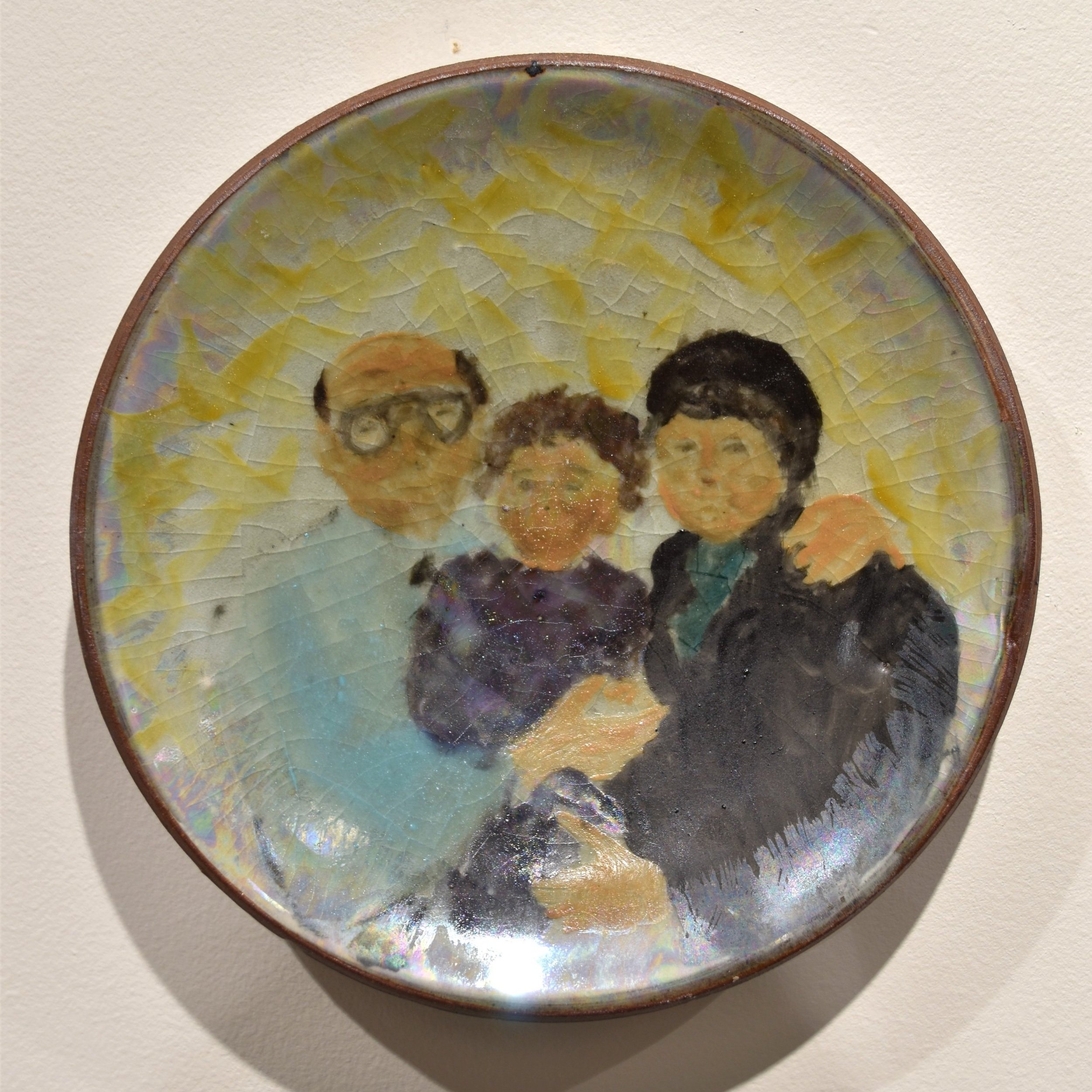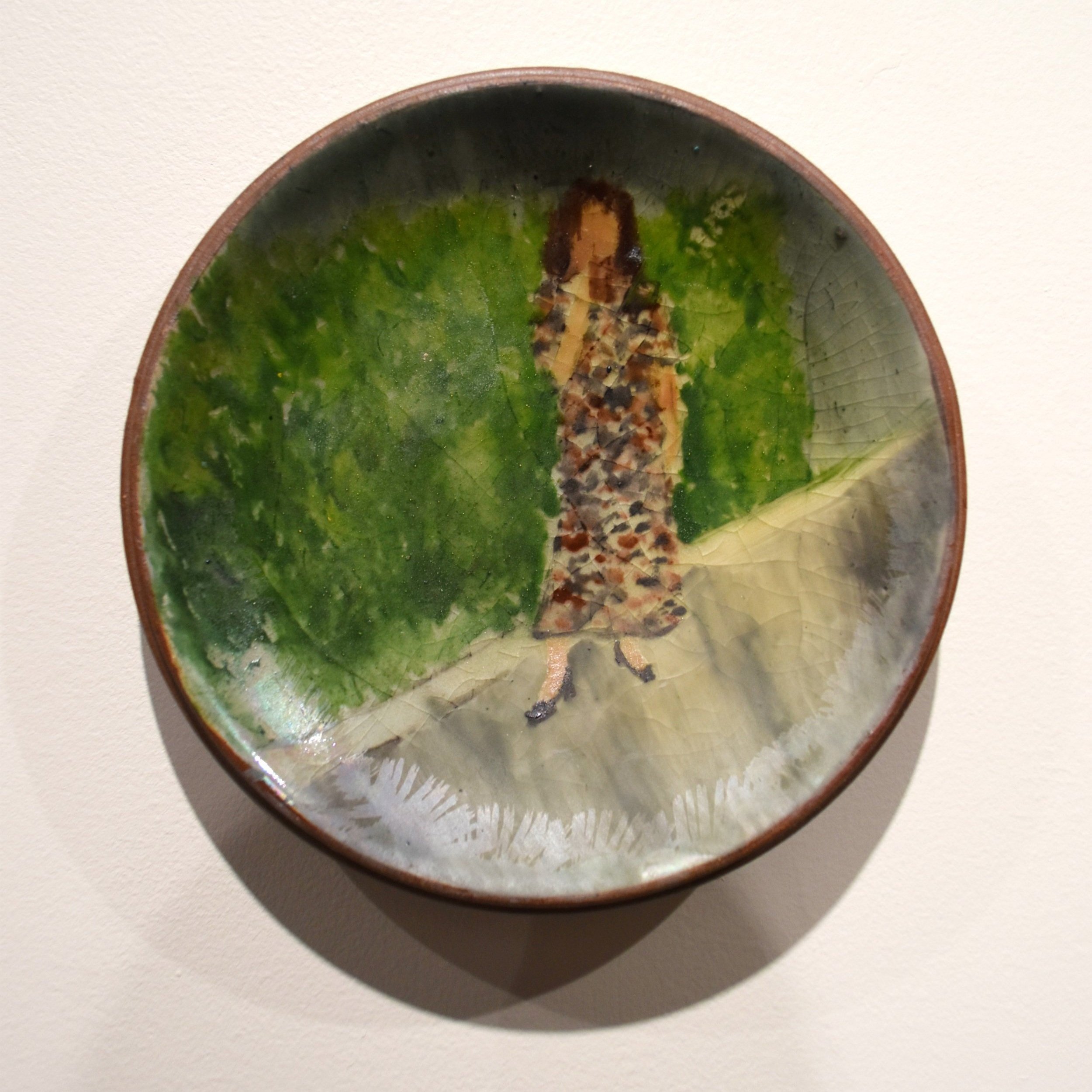Making Work Examining my Family Heritage in the First Semester of the MFA Program at the University of Notre Dame.
I have just finished my first semester of graduate school. The semester concluded with a showcase of the first year MFA’s work and end of semester reviews (presenting our statements and work to the faculty for assessment).
Included is the transcript of the talk I gave at my review and photographs of the pieces.
Pots have served as commemorative artifacts throughout human history. The specific forms and the red and black of Greek pottery are instantly recognizable and the myths that structured their society survive to this day. This work uses the commemorative ability of pots to mythify my family heritage. The images are distorted and romanticized through the lens of my experience of the culture from a distant vantage point. This work is an expression of the reality of belonging to a culture via blood and secondhand experiences. It is a multi-generational story of an immigrant family moving from one ideologically manipulated cultural context to another.
My family emigrated from Ukraine in the year 2000, when I was three years old. As more and more of my life was lived outside of the home: at school, at work and in the art I ingested, my autonomy and my soul inevitably became linked to the land and people on either side of the Indiana/ Michigan border. The pieces in this series are made with a local clay that a friend of mine harvests in Cassopolis, Michigan. It is a deep, rich, brown clay body and I pair it with a celestial blue celadon glaze to represent the aspirational heavenly and the real muddy duality of our human nature.
The three jars are forms that I have developed over the seven years of my ceramic education. Two jars depict my mother and her siblings and my father and his siblings, respectively. They are stylized and dressed in traditional clothing to appear as characters in a book of Ukrainian fairy tales, a main frame of reference for the place we came from in my childhood. The pattern in the background is an element of traditional Ukrainian embroidery: this particular symbol represents family well-being and protection. The final jar depicts my sister and me in plain clothes, drifting away from the strong bond we shared as children towards the fabric of the culture in which we are embedded. The theme of the embroidered symbol is repeated on the third jar, but now it is made up of American corporate logos, symbolizing the way capitalism has wormed its way into the fabric of this culture and taken it over. The Capitalist environment and the distance from our heritage contribute to the erosion of the traditional values of our ancestors.
I view the American cultural landscape through a Marxist lens in the third jar and read backwards into the other two. Capitalism has created and manipulated this culture: The innocuous symbols of the corporations represented in this jar surround us in our daily lives, masking their histories of exploitation and political manipulation with cute jingles, crisp bubbles, and the promise of self-worth and belonging. The fabric of this culture is poorly constructed, the patterns do not touch and exist next to one another, isolated, like workers on an assembly line, alienated and forced to perform fragmented repetitive tasks, unable to grasp the whole of the product. Looking into the past and into the roots of my ancestry, I see a pre-industrialized culture centered around sustainable living, artisanship, and community health, this is represented by the pattern on the first jar. I see this culture broken apart by the Industrial Revolution and by the gross misuse of Marxist philosophy that was the Soviet Union, represented by the dissolution of the pattern on the second jar. The symbols and rituals of cultures were wiped out in the name of a unified state and the people became workers and became expendable. My family was one of many that flocked to the promise of a better life in the United States and though I taste a bitter irony in our landing safely in the arms of the late-stage capitalist hellscape, it is not for me to say whether they made a mistake in taking the bait.
Don’t Touch Anything in the China Cabinet is a collection of family photographs that were taken in Ukraine, rendered onto plates using lead-based China Paint. In the Soviet Union, it was common to have a china cabinet in the home containing arduously acquired china sets that no one was ever allowed to touch, except for on the most special of occasions. Both the china cabinets and their contents were very similar from home to home. For example: one component was a set of mass-produced fish jug and fish cups intended for enjoying liquor. This set is widely recognizable and was famously almost banned during Gorbachev’s tenure due to his anti-alcohol stance. My mother’s family kept the baby teeth of their children inside their set. My uncle views these china cabinets as a dehumanizing consolation prize, a meaningless, fabricated cultural ritual to distract from the empty shelves at the grocery stores and the long lines for bread and butter. Much like the commercial reality of the USA, distracting the populace from the swindling machinations of the oligarchy with trinkets and trends. The plates of family memories have no rules against touching but their materials make them toxic to use, simulating an impassable distance between me and the family history and the old way of life.
The images on the plates were chosen specifically for the joy that emanates from them. The representations of my family on the jars are proud and noble. The reality is that my family is as flawed and fractured as the ideological contexts that we exist in. In fact, Marxism identifies the cause of these flaws as products of the economic systems. As my cultural heritage remains on the world stage in scenes of violence and loss, I choose to present us in celebration of joy and life as a sign of resistance to the powers that try to erase us in the name of profits and control.
